3. Circular Open Source Fashion¶
Research & Ideation¶
“In 2011, the Heimilisiðnaðarfélag Íslands (The Icelandic Handcraft Association), Þjóðminjasafn Íslands (the National Museum of Iceland), and Listaháskóli Íslands (the Icelandic Academy of the Arts) published Íslensk Sjónabók, a massive collection of patterns and ornaments from old Icelandic manuscripts. The book contains digitized recreations of over 1000 border, repeating, and stand-alone patterns.“
I find this book very interesting in the sense of which patterns can be pixelised so it can be fabricated in different materials. It becomes a recipie for duplication. The patterns in the book are very beautiful and connected it straight away to the modular textiles and how repetition can look like and work.
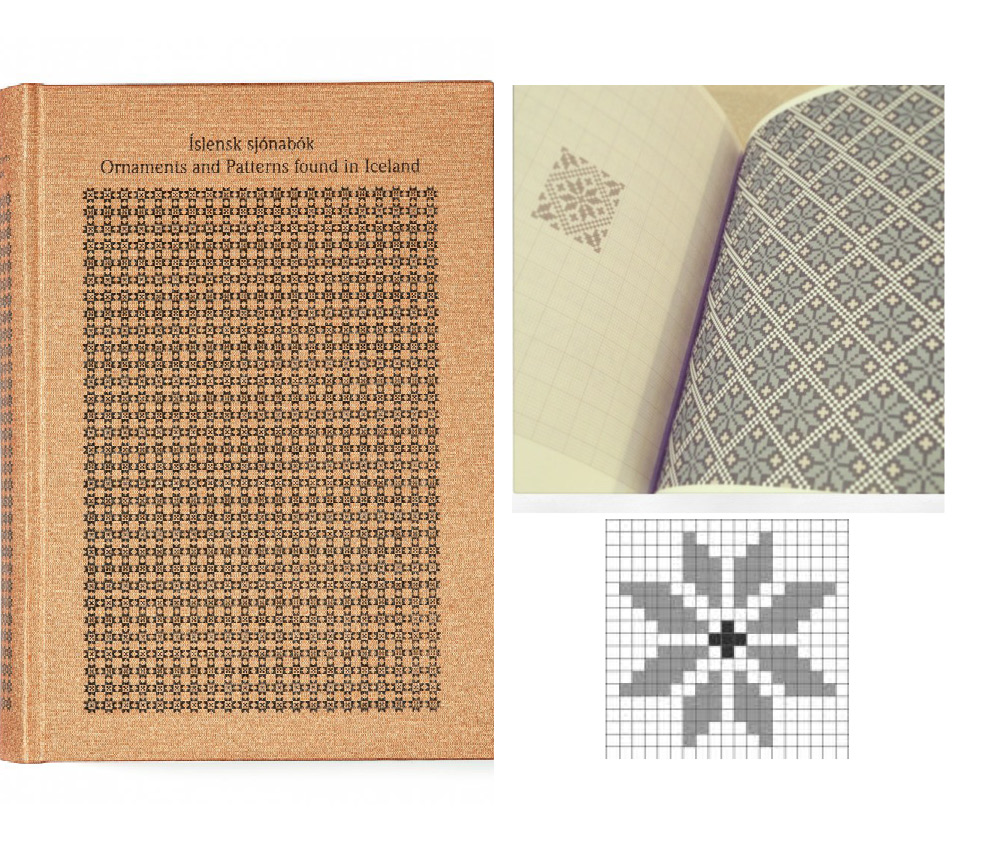
One of the first things I saw when googleling modular textiles was this computer bag bade out of leather. It got me thinking that I also needed a new bag for my computer so that became my goal and project for this week. The photo shows the computer bag I found on google and fish leather and I like how alike they are in texture and patterns.
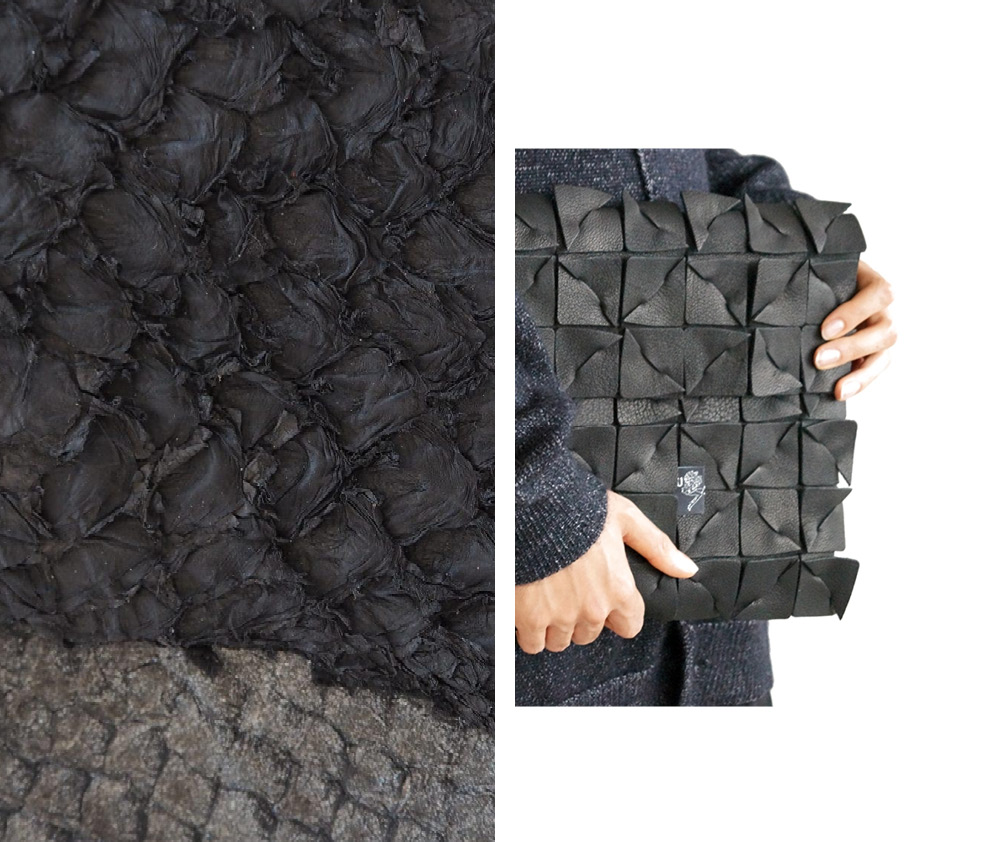
References & Inspiration¶
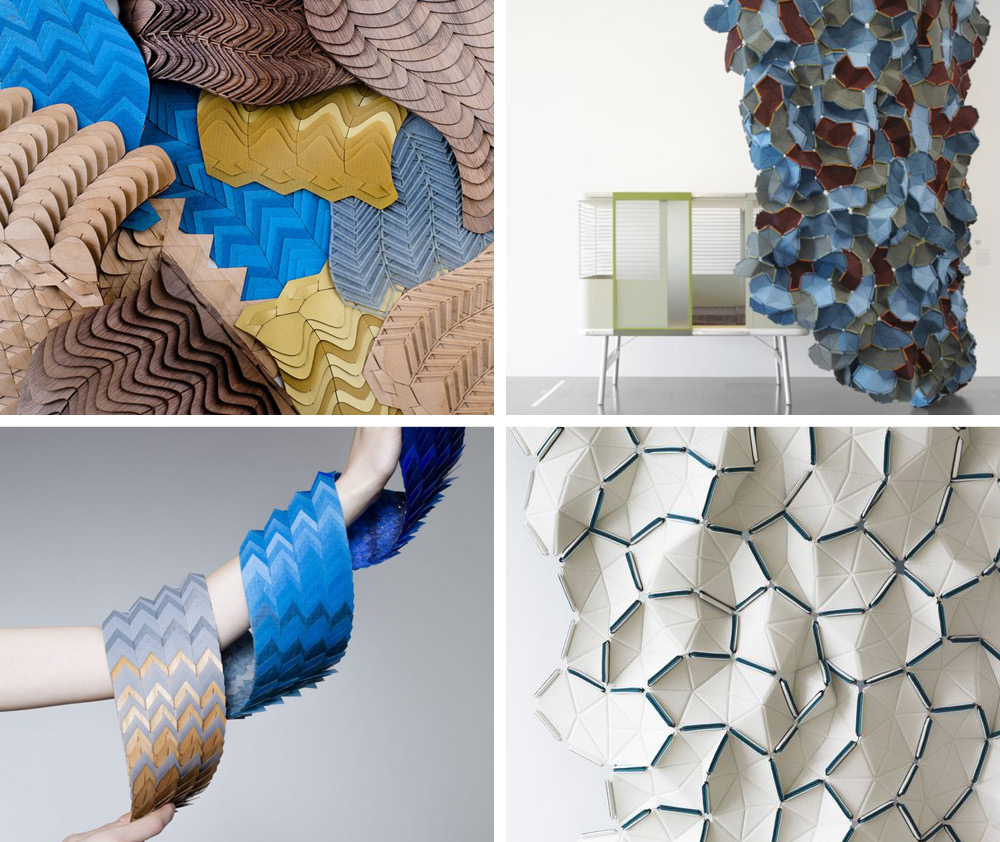
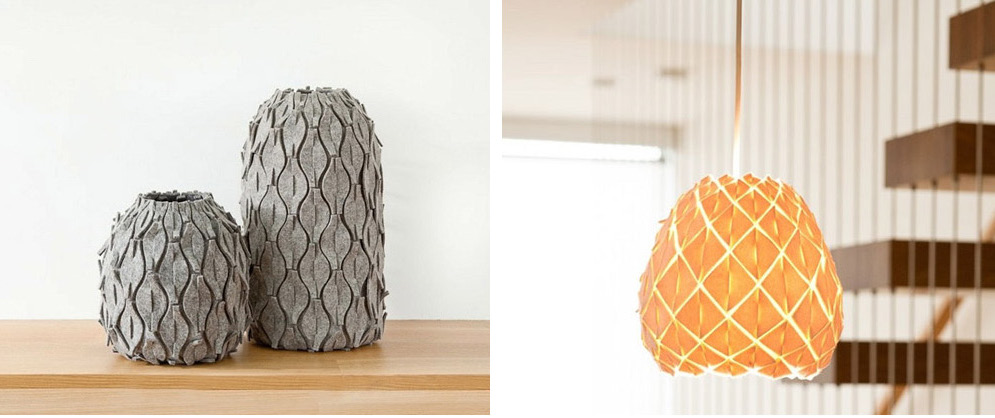
Refrences¶
- Zero Waste Design Online
- Modular bags
- Mary-Ann Williams interview: A textile system builder
- Orsi Orban / Weaving gets an update with The MINTA Modular Structure System
- Sjónarbók
- Aurelie Tu in / crafted systems / 2010
- Ronan & Erwan Bouroullec
Tools¶
- Laser Cutting Materials Guide
- 2D/3D modelling Rhino3D
- Materials you should not process with a laser
- polysester lasercuting
- Adobe Illustrator
- laser cutter
Process and workflow¶
I found a tutorial from How about orange and a modular felt pattern that I liked the pattern of and it was also something that I though that I could work more on. I read from the tutorial that to get the extra finishing you were suposed to cut the cornes of. I do not think that that is a good use of material so I decided to find a way to improve the pattern so it would have the same finnishing but no cut offs.
paper tests¶
Note to self: Begin with a girded paper! It makes the thought process with this project so much easier. To get the finnishing in wanted from previous pattern I just needed to add a few more cuts to the module.
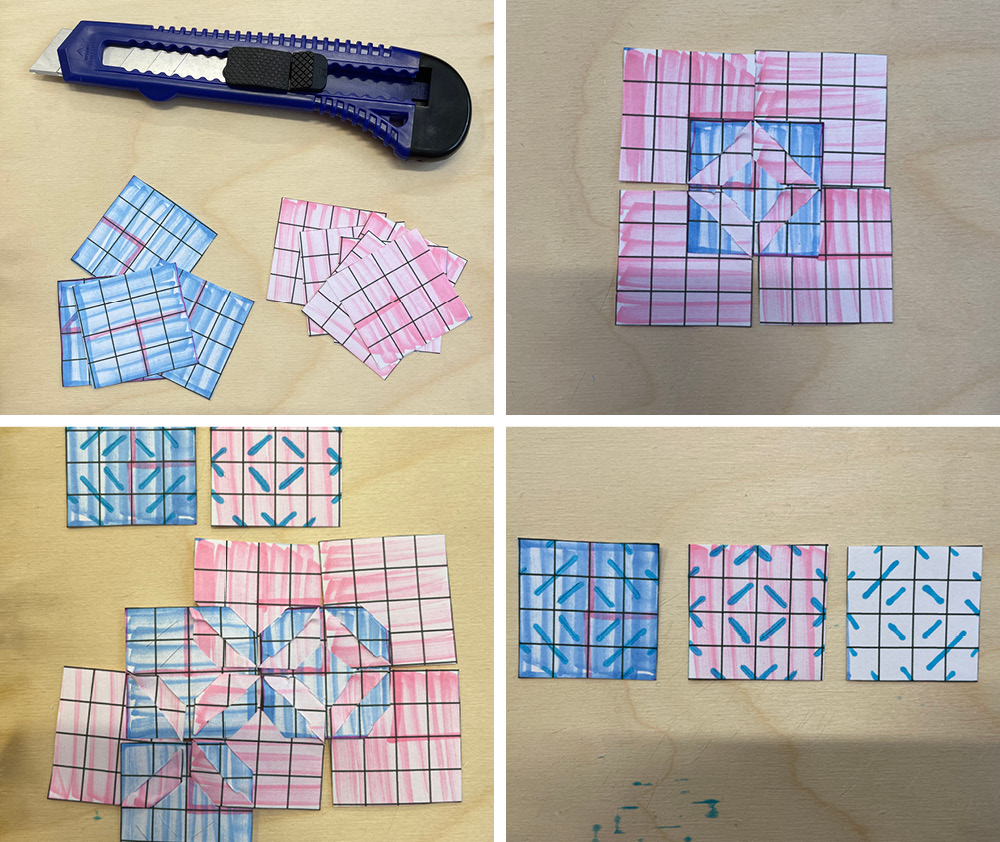
fabric test¶
First Idea was to work with wool felt from the Icelandic Sheep. The tests came out great but needed a little bit of adjustment to the lasercut file and the felt needed to be a little thinner. After some braintorming I thought I should work on material from the redcross instead of felting a new material only just to chop up again and asseble back into fabric. It felt like I was only adding to the circular fashion instead of working within it.
 I Worked with a polyester knitfelt blanket we had revieved from the redcross and was not so nice looking. I could see that it had been through alot over the years... To know it it was save to lasercut I found this site that told me it was.
I Worked with a polyester knitfelt blanket we had revieved from the redcross and was not so nice looking. I could see that it had been through alot over the years... To know it it was save to lasercut I found this site that told me it was.

By working in illustrator and simple commands I managed to make this model 1 which look like on the photo below.
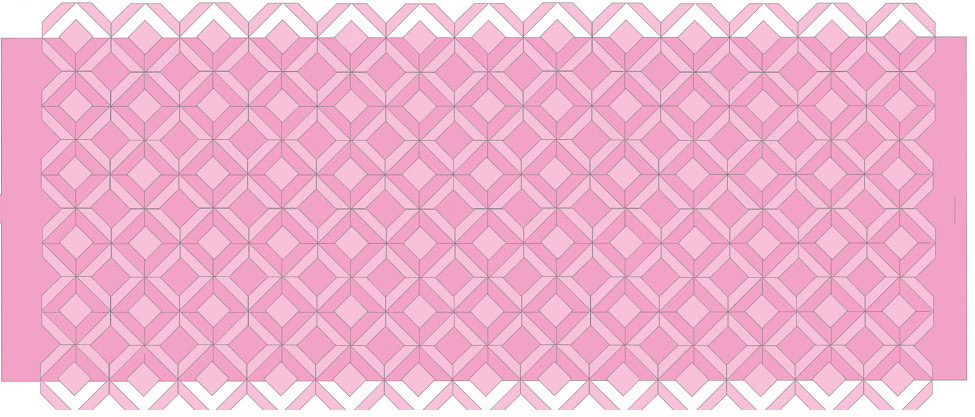
Lasercut settings for Epilog 60 watt¶
- Paper 0.5 mm: speed 100 / power 10 / frequency 10
- Polyester 2 mm: speed 100 / power 50 / frequency 10
- Fish leather 1 mm: speed 80 / power 100 / frequency 50
- Wool felt 3 mm: speed 30 / power 70 / frequency 50
Assembling¶
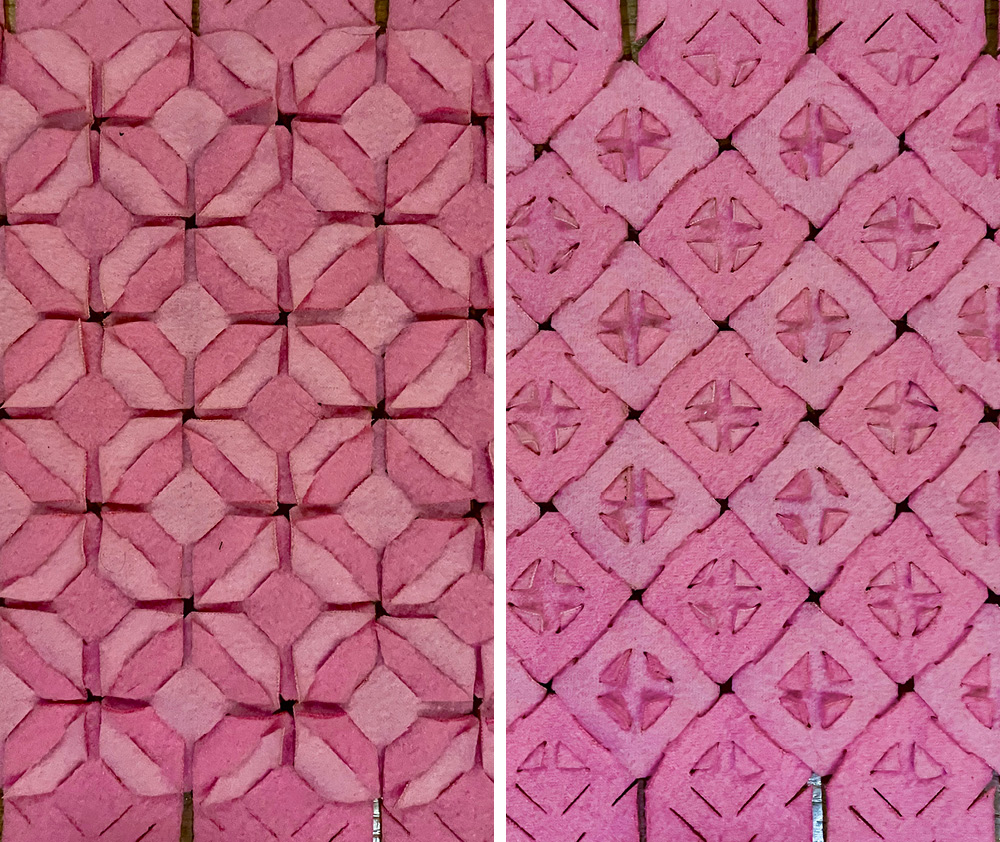 I found out that because of the aged material I was working with it had faded in color on some parts and not in others. So i was working with the color in ways to show how the color of the material can fade in time and propably because of contact with sunlight.
I found out that because of the aged material I was working with it had faded in color on some parts and not in others. So i was working with the color in ways to show how the color of the material can fade in time and propably because of contact with sunlight.
I had made the model in illustrator to work from and used that to understand how I was supose to assemble the modules togeather.
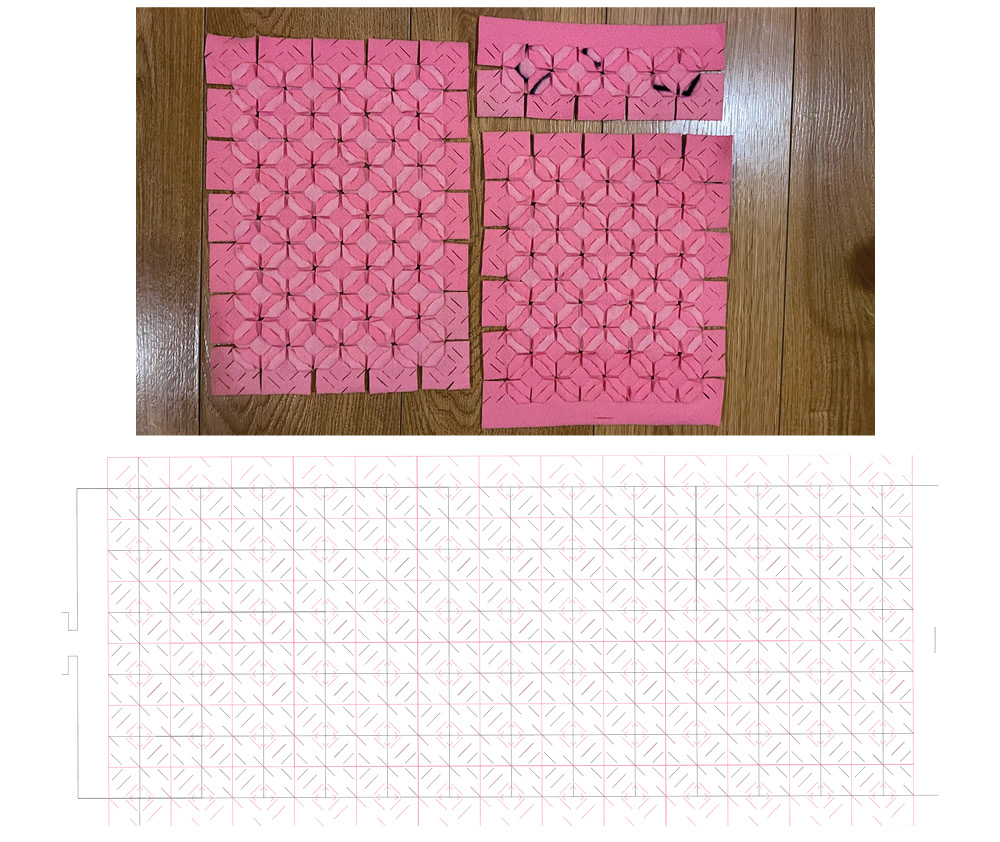
Final piece with pink knitfelt¶
I was not very happy with the final outcome. I liked the colors but not the material and it as not safe enough to keep a computer. It is a knitted material which means it is streachy and does not hold togeather very well, but it is soft and fluffy. I made tests with other materials like fish leather.
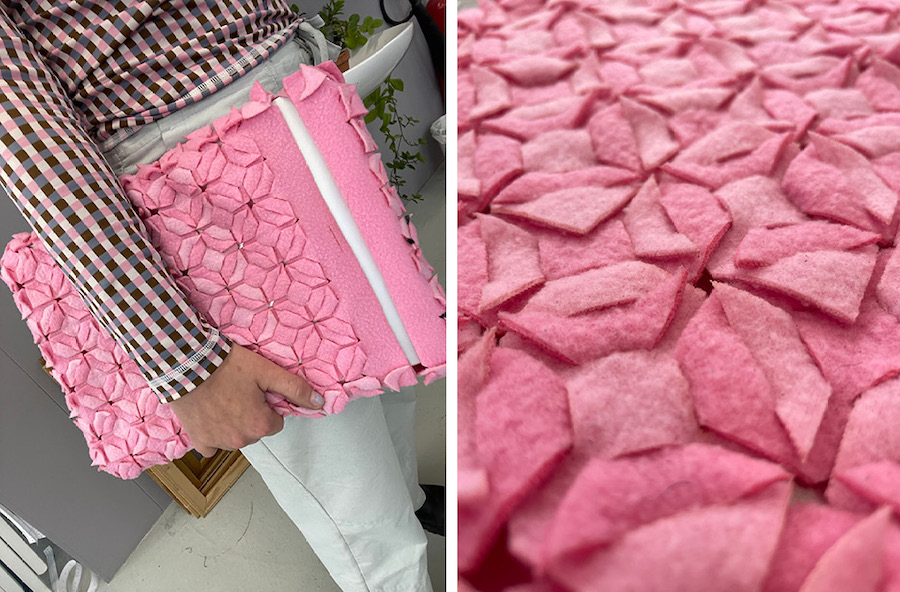
Fishleather project¶
Since I did not like the outcome from my first computerbag I decited to make another one out of another material that would suite the prouct better, fishleather. I got it from a women who no longer worked with it and was only collecting dust at her home. I like how the leather is natural, undyed and you can really see the fishes pattern on the skin. Working with it, you can see that it has a range of soft colors and intertwine really well. For this project I used the same modules as for the pink knitfelt.
Too see how I should structure the modules for lasercutting on the fishleather I took a photo of the leather and image traced it in illustrator. The I took the fill out so I would only had outlines. I measured the leather and made the traced fishleather match the original size. Once I had the material surface ready I could start placing the modules2 so they would fit and use most of the material as possible.

Process with fishleather¶
It is really fun playing around with assembling the lasercut modules togeather and finding new forms. I made a 3D almost diamond shaped objects. I tried filling it with rise and make a shaker out of it and I think that would be fun to continue o, another time!
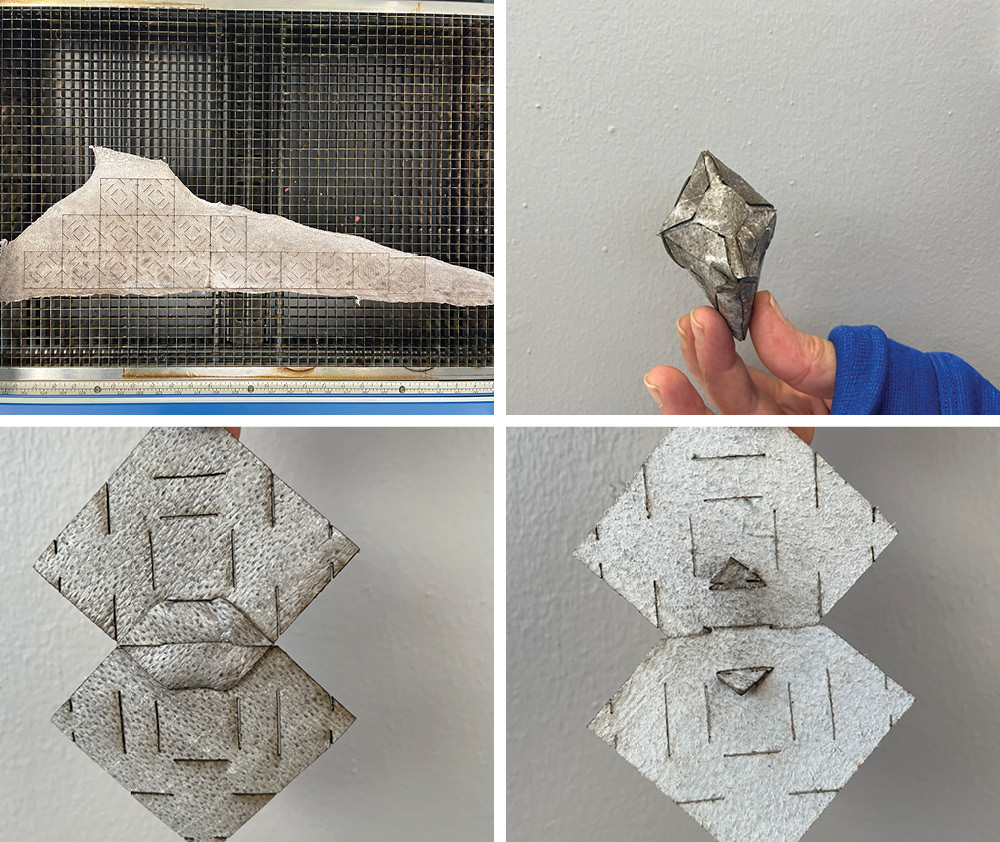
Need to work on my rhythm!
Assembling¶
Material - 7 fishleather pieces - 110 lasercut modules - 2 extra pieces for edge
Time for assembling - 20 minuets lasercuting - 4 hours assembling
It is a more difficult to assemble the modules together with the leather material and you get black hands from the burnt edges. I planned on having the right side of the fish leather face out but after I had assembled a few pieces together I noticed that the back looked really good and spoke more til me so I decided to turn it flip it and make the back come forward.

Final outcome¶
I am really happy with the final outcome using fishleather as the material. It protects the computer better and the modules actually fit better togeather.
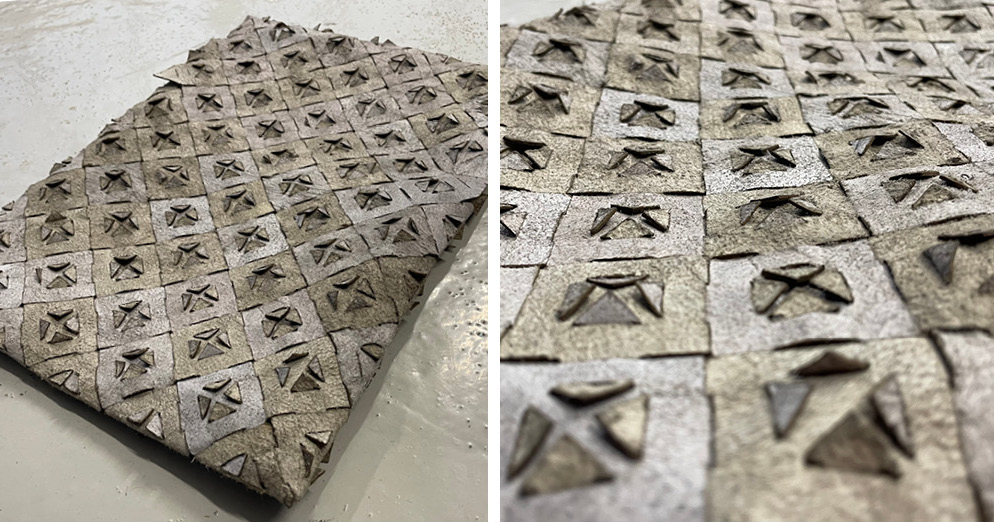 ¶
¶
Fabrication files¶
-
File: Laser cut sheets Computerbag base&Computerbag interlockings ↩
-
File: Modules Single module ↩